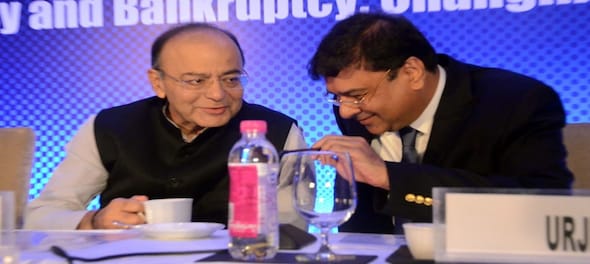
From dressed-up numbers to poor scrutiny, from low accountability to misrepresentation of facts, from non-transparency to washing dirty linen in public, we saw it all in 2018.
 One of the defining events of 2018 was the default by Infrastructure Leasing & Financial Services (IL&FS), a marquee infrastructure financier rated AAA. This sparked the non-banking financial services (NBFCs) liquidity crisis and put the spotlight on the risky practices of these financiers who borrowed short-term money to extend long term debt, and finally faced their day of reckoning, with fears of defaults by several such entities. While regulatory measures to prevent such an outcome has prevented any such occurrence in 2018, it has put these entities on watch.
One of the defining events of 2018 was the default by Infrastructure Leasing & Financial Services (IL&FS), a marquee infrastructure financier rated AAA. This sparked the non-banking financial services (NBFCs) liquidity crisis and put the spotlight on the risky practices of these financiers who borrowed short-term money to extend long term debt, and finally faced their day of reckoning, with fears of defaults by several such entities. While regulatory measures to prevent such an outcome has prevented any such occurrence in 2018, it has put these entities on watch.What also unraveled with the NBFC stress was the easy access these entities enjoyed to money from cash rich mutual funds, that relied almost entirely on rating agencies’ credit assessment of debt servicing capabilities of borrowers to pump in funds. The entire episode turned out to be the ruling government’s Satyam moment. It swiftly reconstituted the IL&FS board through a tribunal driven process to “manage” the fall-out and prevent the infra financier from causing a big round of fresh defaults for the banking and financial sector, already reeling under the weight of heavy write-offs and tight capital.
The crisis put governance centre-stage at IL&FS, where the key managers are now facing a lock-down on their assets and the books are being rewritten, to NBFCs who had been living dangerously in a quest to build large balance sheets, to mutual funds who through caution to the winds by ploughing investor money into a risky business—where assets and liabilities don’t match—and finally rating agencies, who were called out for downgrading a top rated entity to junk overnight.
But speaking of fixed books and cooked numbers, 2018 also witnessed a fair share of auditor resignations which spooked Dalal Street. Manpasand Beverages and Bhushan Steel were among the prominent companies that saw auditors walk out. While the jury is still out on who was in the wrong, as the managements have painted a different picture, the developments left the street rattled.
In the numbers game, though, even the government wasn’t far behind. With the restatement of GDP numbers using a “new” methodology, apparently more robust, the economic growth from many years in the past got marked down. So today, no one knows what India’s economic growth is, because you don’t know which number to believe. Given that, the other option is to track corporate growth, which hasn’t been too inspiring the past few years. But now, even those numbers are in question and need to be taken with a pinch of salt. The next best option now, therefore, is to rely on the power of observation and channel checks to gauge what the economy is doing.
But 2018 wasn’t just about numbers. It was also a lot about people, prominent people. The Kanwars of Apollo Tyres had to lock horns with activist investors who pushed back on the remuneration they received annually, while Sun Pharma’s Sanghvi came under fire for an almost exclusive arrangement with a promoter controlled entity for drug sales in the domestic market. In fact, investor activism acquired a whole new dimension in 2018 with even the highly respected Deepak Parekh coming in for flak for his permanent presence on the HDFC board.
The financial sector also hogged the spotlight on the governance front with two leading ladies and a first generation bank promoter getting the marching orders from the central bank for varied lapses under their watch. While Chanda Kochhar bowed out following allegations of her favouring Videocon group for loans due to an alleged association of the company with her husband, Shikha Sharma of Axis Bank called it quit a day following strong observations by the central bank on the bank’s practices. Yes Bank’s Rana Kapoor too is set to step down in end-January after the central bank rejected a second term for him as CEO, following issues around divergences on asset quality.
The media spotlight on Rana Kapoor and his holding in Yes Bank also led to another modus operandi of promoter financing coming to light, tucked away from the eyes of the market regulator and investors who focus on disclosures on pledged shares to evaluate promoter leverage. The route involved promoter holding companies borrowing money from mutual funds on the strengths of their balance sheets (with mostly shares as value), instead of pledging the stock. Interestingly, both mutual funds and promoters came out strongly indicating that this was a long-standing industry-wise practice. If it is/was, did the Securities & Exchange Board of India not know about it? Interestingly, the regulator too is looking to beef up the number of independent directors on its board, according to news reports.
The other high profile tussle was between the founders of Infosys and the company’s board of directors on the removal of CEO, Vishal Sikka, which transpired mostly in 2017, but culminated with the stepping in of Salil Parekh as the new chief in January. Several reports of Vishal Sikka having taken imprudent decisions have come to light thereafter.
But the biggest war of the year by far was the one between Reserve Bank of India governor Urjit Patel and the government. The bad blood spilt out and was there for all to see. The unprecedented public display of animosity ended with the central bank chief stepping down and a seasoned bureaucrat, Shaktikanta Das stepping in to take charge.
The episode put the issue of governance at the central bank and the role of its chief under the scanner like never before.
That wasn’t the only governance subject the government found itself encircled in. Its move to initiate forced buybacks and mergers didn’t receive any wide applause and the recent indications of subsidy payments being pushed back to the next fiscal, in order to help the government meet its deficit target, has put the spotlight back on numbers. That the government continues to follow a cash accounting methodology while the corporate sector is moving to comply with the most transparent accrual accounting standards makes one wonder if the law enforcers have the moral right to preach.
To sum up, 2018 was a bad year for believers and a good one for the sceptics. One only hopes 2019 will bring back the belief in numbers and in the people who run the organisations that put them out.
First Published: Dec 31, 2018 11:01 AM IST
Check out our in-depth Market Coverage, Business News & get real-time Stock Market Updates on CNBC-TV18. Also, Watch our channels CNBC-TV18, CNBC Awaaz and CNBC Bajar Live on-the-go!


Lok Sabha elections 2024: Baramati to Mainpuri, key battles in phase 3
Apr 30, 2024 7:01 PM
From Amethi to Mumbai South — Lok Sabha seats where parties are yet to announce candidates
Apr 30, 2024 6:39 PM
Diamond rings, fridge, TVs: Bhopal voters to get exciting prizes to boost turnout in Lok Sabha polls
Apr 30, 2024 6:35 PM
This Bihar district has its own app to help voters during Lok Sabha election
Apr 30, 2024 4:02 PM

